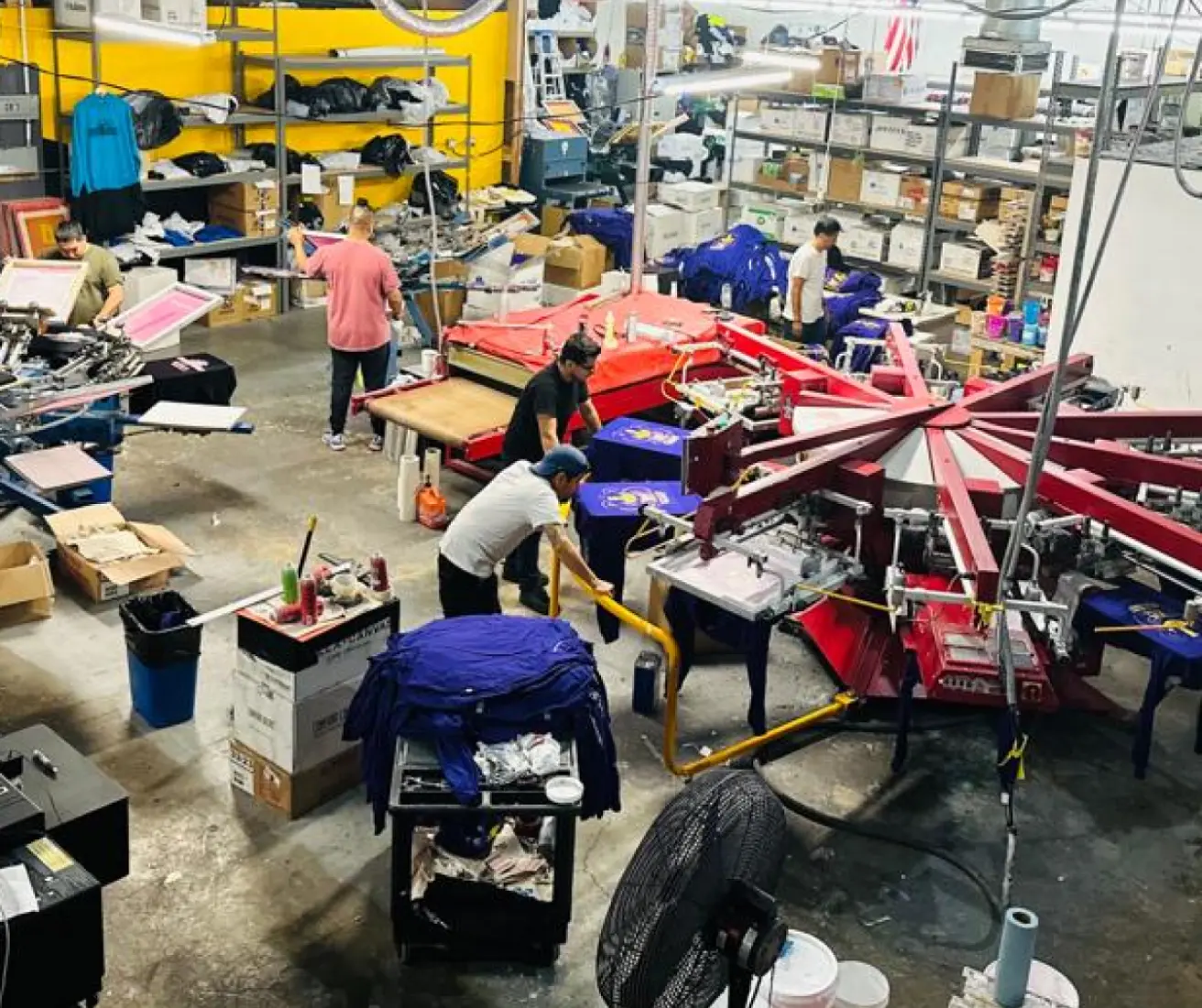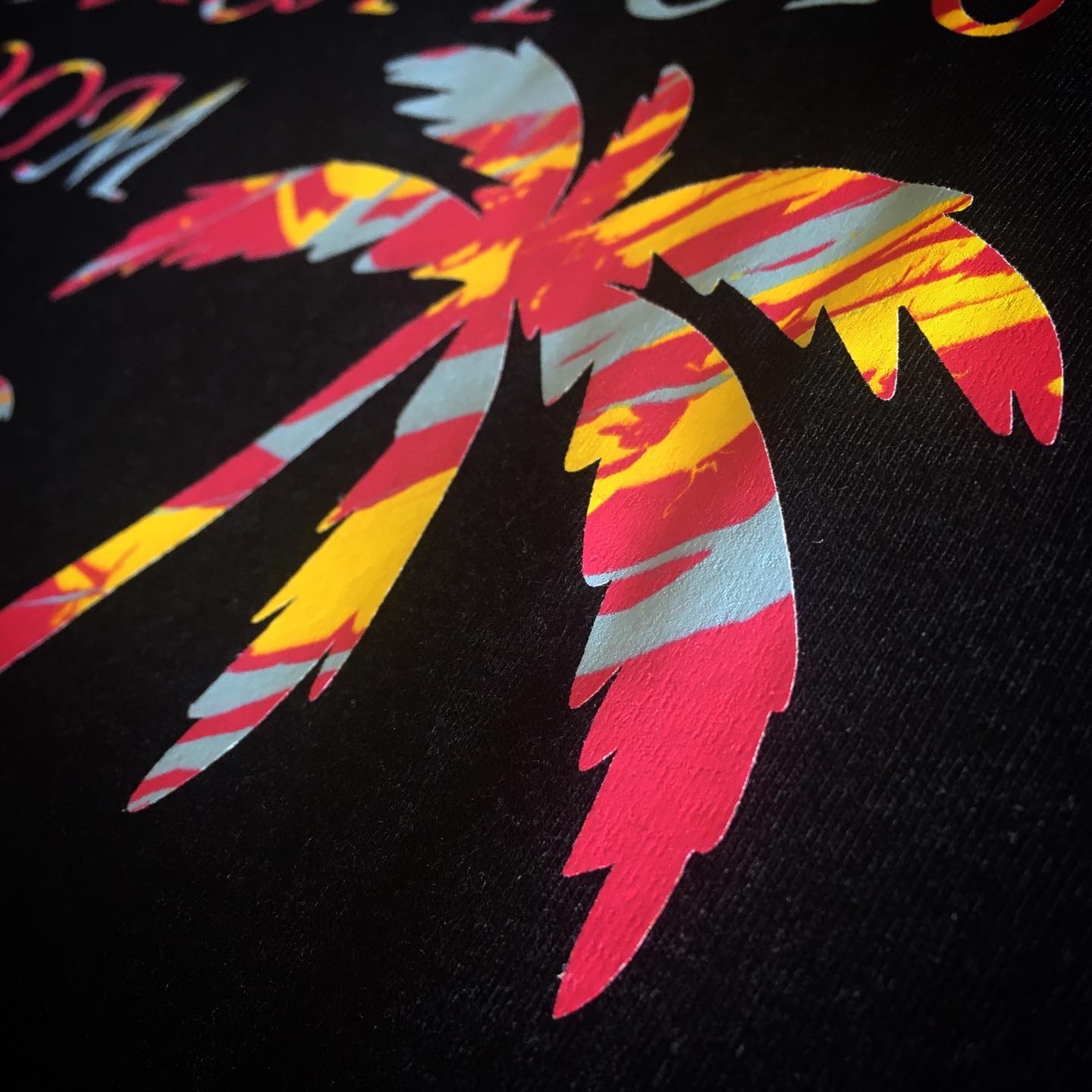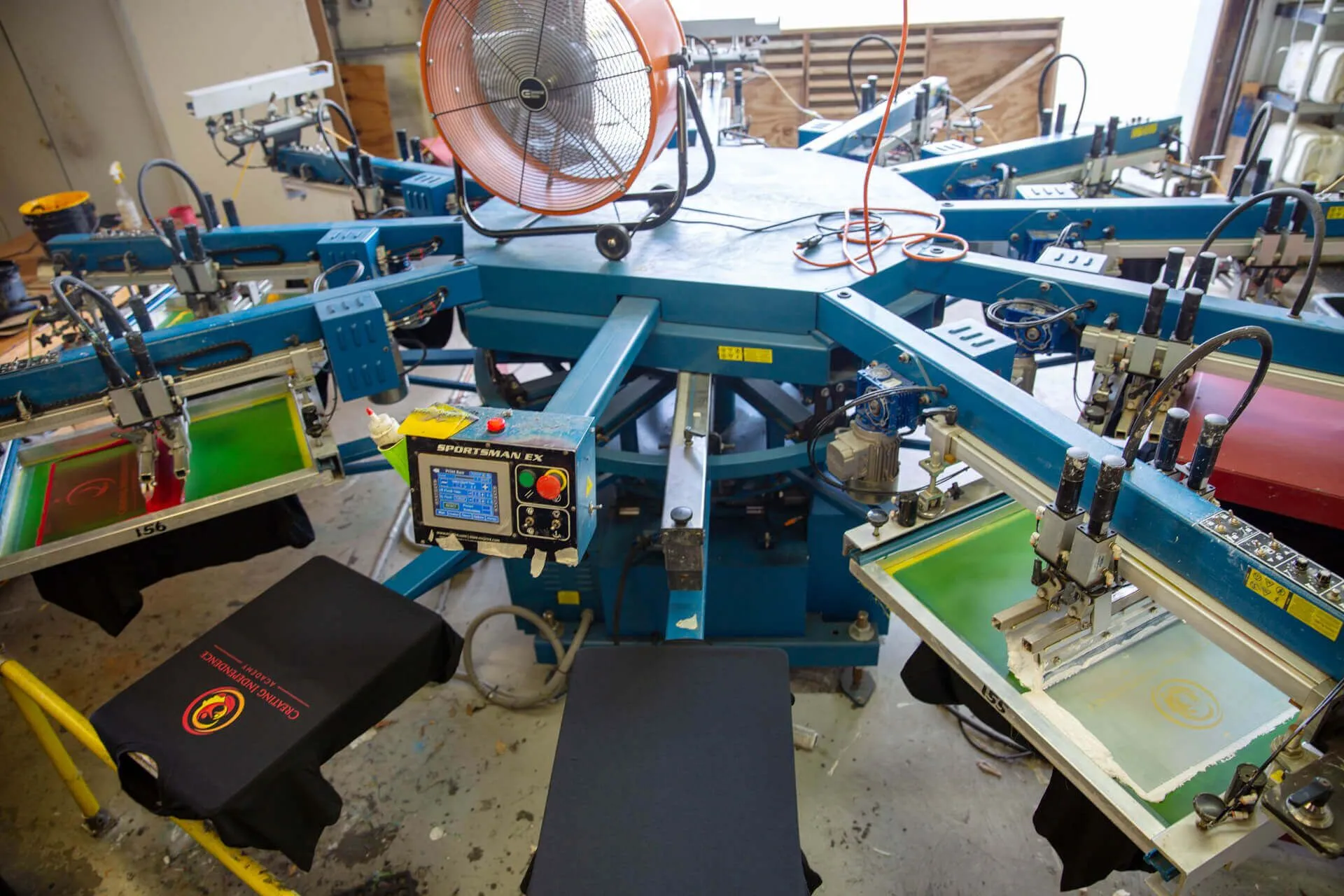Complete Screen Printing Kit for Artists and Creators
Complete Screen Printing Kit for Artists and Creators
Blog Article
Display Printing Uncovered: Everything You Need to Know Concerning Tee and Garment Printing Strategies
If you've ever wondered just how those dynamic layouts finish up on your favorite tees, you remain in the best area. Screen printing is a fascinating approach that combines art with method, providing endless possibilities for creativity. Comprehending the principles, from equipment to ink selections, can substantially affect your results. Ready to explore the crucial aspects that make display publishing an art form? Allow's reveal the details that can raise your jobs.
The Fundamentals of Display Printing: Exactly How It Functions
When you plunge into display printing, you'll find it's both an art and a science. At its core, screen printing includes creating a pattern, or screen, that permits ink to travel through only in certain locations (screen printing kit). You begin by selecting your layout and preparing your display with a light-sensitive solution. As soon as you expose this solution to light, it hardens, leaving your layout as an unfavorable space.
Next, you'll mix your inks and prepare your printing surface area. Setting the screen over the material, then utilize a squeegee to push ink with the display onto the garment. This procedure calls for accuracy, as you want clear, dynamic prints. After printing, you'll cure the ink with heat, guaranteeing it complies with the textile and lasts via washes. Each action is necessary, and mastering them will elevate your screen printing abilities, changing straightforward garments into special, expressive items.
Kinds of Display Printing Methods
As soon as you understand the basics of screen printing, it's time to discover the numerous strategies that can elevate your designs. One popular method is typical display printing, where ink is pushed with a stenciled screen.
One more alternative is plastisol printing, understood for its longevity and brilliant colors, making it a favorite for many brand names. Experiment with halftone printing to produce gradient effects and intricate layouts.
Crucial Equipment for Screen Printing
To accomplish sensational outcomes in display printing, having the ideal devices is fundamental. Initially, you'll require a tough display printing framework, which holds the mesh that transfers your design onto the garment. Next, purchase premium squeegees; these are vital for using ink evenly throughout the screen. You'll also call for a great direct exposure unit to produce your displays, along with a washout booth for cleaning them after usage. A dependable warm resource, like a conveyor clothes dryer or warmth press, is critical for curing your prints to guarantee durability. Do not neglect a proper workspace, outfitted with tables and storage for your materials. Protective gear, such as masks and handwear covers, will certainly keep you secure from chemicals and inks. With the right tools, you'll be well on your method to creating professional-quality prints.
Selecting the Right Inks and Products
When picking inks and products for screen printing, you need to take into account the kind of ink that works finest for your job. Consider fabric compatibility to assure your styles look last and terrific long. Also, discover environmentally friendly ink options to make your printing procedure a lot more sustainable.
Kinds of Screen Inks
Picking the ideal screen ink is essential for attaining dynamic, durable prints that fulfill your task's requirements. There are several kinds of screen inks to analyze. Plastisol ink is popular for its flexibility and convenience of use, giving excellent color opacity on dark textiles. Water-based ink, on the various other hand, provides a softer feel and is environment-friendly, making it suitable for those seeking to lessen their environmental influence. Release inks remove dye from the material, leading to a soft, classic look however need particular handling. Ultimately, specialty inks, such as glow-in-the-dark or metal, can include distinct impacts to your layouts. Review your project demands and pick the ink that aligns best with your preferred end result.

Material Compatibility Considerations
Comprehending fabric compatibility is crucial for accomplishing top quality display prints, particularly since various materials react distinctly to various inks. When selecting inks, take into consideration the material type-- cotton, polyester, or blends. For cotton, water-based inks function well, supplying gentleness and breathability. Polyester, on the other hand, typically calls for plastisol inks for better adhesion and vibrant colors. You could require to utilize a combination of both types if you're publishing on blends. Always test your inks on sample textile to ensure they adhere effectively and preserve color integrity. In addition, keep in mind that fabric weight and appearance can impact the final outcome, so picking the ideal ink and product combo is essential for your job's success.
Eco-Friendly Ink Options
Environmentally friendly inks are ending up being a preferred option for display printers that intend to decrease their environmental influence while preserving top quality. When choosing inks, think about water-based inks, which are much less harmful and less complicated to tidy up contrasted to traditional solvents. These inks bond well with fabrics, providing vivid results without harmful chemicals. You may also explore eco-solvent inks that make use of less volatile organic compounds (VOCs), making them a much safer choice for both your health and wellness and the world.
Additionally, look for inks made from eco-friendly sources, such as soy or vegetable-based alternatives. By choosing the ideal inks and materials, you'll not only produce sensational styles but likewise add to an extra lasting printing process. Make the switch, and your prints will mirror your dedication to the environment!
Preparing Your Design for Screen Printing

File Format Needs
To guarantee your style looks sharp and vivid on textile, you'll require to pay attention to file layout needs for screen printing. Beginning with vector data like AI or EPS, as they can be scaled without shedding quality. If you utilize raster images, choose high-resolution data, such as TIFF or PNG, preferably at 300 DPI. Avoid using JPEGs, as they can shed quality when resized. Make certain your design has a clear history to prevent unwanted white edges on your prints. Maintain shade settings in mind; CMYK is typical for display printing, so transform your RGB develops appropriately - screen printing kit. By complying with these standards, you'll establish your artwork up for an effective print.
Shade Splitting Up Methods
Color separation is a crucial step in preparing your layout for display printing, and understanding it can considerably enhance your print top quality. You'll need to damage your design right into individual shades, as each shade calls for a separate screen throughout printing. This precision not only guarantees exact color representation yet likewise streamlines the printing process.
Resolution and Dimension
Accomplishing the very best results in screen printing begins with ensuring your layout has the right resolution and size. Preferably, your art work ought to go to the very least 300 DPI (dots per inch) for sharp, clear prints. Your final item could look less than professional and pixelated. if you make use of reduced resolution.
When it concerns dimension, take into consideration the dimensions of your print area. Style your art work to match the last print dimension, preferably developing it in the actual measurements you'll be publishing. This way, you'll stay clear of any type of unforeseen scaling concerns.
Constantly examine your layout in both vector and raster layouts. Vector graphics can be scaled without losing quality, making them ideal for screen printing. Preparing correctly will ensure your design looks amazing on every garment!
Step-by-Step Screen Printing Process
Screen printing is a dynamic process that permits you to develop dynamic designs on various surfaces. To start, you'll need a screen, emulsion, and your chosen ink. Prepare your screen by cleaning it thoroughly. Next off, use the solution uniformly and let it dry in a dark area. Once dry, reveal your display to light with your layout put on it, which will set the emulsion where the light hits, developing a stencil - screen printing kit.
After rinsing the unexposed emulsion, your screen prepares. Establish it up on your printing surface and align your garment below it. Put ink onto the display and make use of a squeegee to press the ink through the stencil onto the textile. Raise the display thoroughly and let the print completely dry. Ultimately, cure the ink making use of heat to guarantee toughness. That's it! You've efficiently display published your layout.
Tips for Successful Screen Printing Projects
While you're diving into your screen printing jobs, keep in mind that prep work is crucial to success. Begin by collecting all your materials-- inks, mops, garments, and screens. A tidy office aids prevent unwanted errors, so clean before you begin.
Following, validate your artwork is high-resolution and correctly sized for your garment. Check your display for proper direct exposure and clean it extensively to prevent spots. When blending your inks, follow the supplier's standards to achieve the right consistency.
During printing, apply even stress with your squeegee for regular results. Do not rush; take your time to confirm each print meets your criteria. After printing, let your garments dry totally before handling or packaging them.
Last but not least, constantly keep an example of your benefit future referral. This means, you can analyze your development and boost your techniques in time. Satisfied printing!

Often Asked Concerns
For how long Does It Take to Establish a Display Printing Work?
Establishing up a display printing task generally takes around 30 mins to an hour. You'll prepare the displays, mix inks, garment printing and change the press. The time varies based upon intricacy and experience, so stay organized!
Can I Publish on Various Material Enters Utilizing the Exact Same Method?
Yes, you can print on various material types making use of the very same strategy, however you'll need to adjust your setups and inks. Some textiles take in ink in different ways, so trying out warranties the ideal outcomes for every material.
What Are Typical Mistakes to Stay Clear Of in Screen Printing?
When display printing, prevent common errors like using the incorrect ink, disregarding correct exposure times, or avoiding pre-press checks. Always check your configuration and maintain clean displays to guarantee top quality results each time.
Just How Can I Correctly Tidy and Preserve My Screen Printing Devices?
To effectively clean and keep your screen printing tools, you need to frequently wash displays with proper solvents, inspect squeegees for wear, and guarantee all devices are saved dry and dust-free. Uniformity improves and avoids costly repair work performance.
Is Screen Printing Eco-friendly Contrasted to Various Other Methods?
Display printing can be a lot more eco pleasant than various other techniques, specifically if you utilize eco-conscious products and water-based inks. By picking sustainable materials and methods, you lower waste and minimize your influence on the planet.
Screen Printing Uncovered: Every Little Thing You Required to Know Regarding T-Shirt and Garment Printing Techniques
At its core, screen printing entails developing a stencil, or display, that enables ink to pass via only in details areas. Placement the display over the textile, after that utilize a squeegee to press ink via the display onto the garment. One prominent method is standard screen printing, where ink is pushed through a stenciled display.When selecting inks and products for screen printing, you need to take into account the kind of ink that works finest for your project.
Report this page